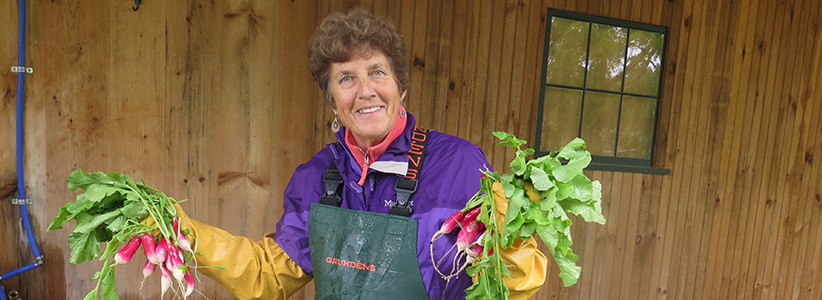The Progress and Power of Gaining Ground

Gaining Ground drew me to Concord. For 20 years, I brought my students from Nashoba Brooks School to volunteer in the garden and consequently viewed the program through a seventh-grade lens. Some responded to the sheer physicality of the work, some marveled (or screamed) at worms in the soil, some became passionately enraged about childhood hunger.
I could never have foreseen how Gaining Ground would evolve. We were among the first volunteers given the opportunity to plant at the Old Manse, to tap trees and boil off syrup, and to husk and grind the Bloody Butcher corn to make corn-muffin mix for Open Table. As the farm grew, students did too, and high schoolers, who had begun their love of Gaining Ground as Read-For-Seeders, came back as young adults.
Joining the board has broadened my perspective: I see the whole network of food distribution, the diversity of our volunteer base, and the compassion of our donors. Now a Recipient Committee member, I was privileged to visit seven terrific hunger relief programs this summer. From the Head Start preschool program Paula Jordan has lovingly crafted in Lowell to House of Hope and Rosie’s Place, I saw firsthand where our fresh food is given a place of honor in the chef-prepared meals and how healthy fresh food can change lives. In Westford, guests were sharing kale recipes and rhapsodizing about the lettuces while Food for Families recipients raved about the heirloom tomatoes.
But nothing has made me more excited than to meet a former student at our March “Hunger Relief from the Ground Up” panel event. She grew those first heirloom tomatoes for the Old Manse and is now working with a hunger relief organization in Boston. One small seed can grow into a revolution. This is the power of Gaining Ground.